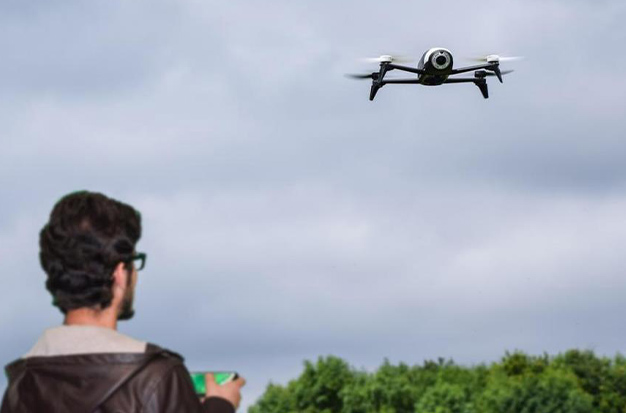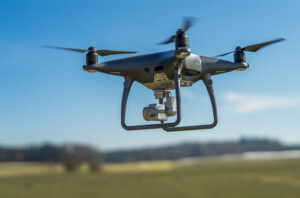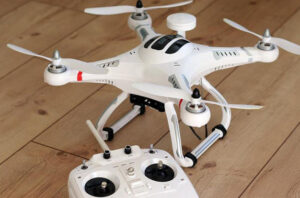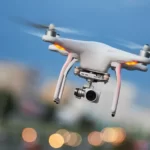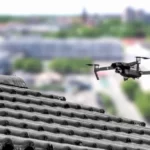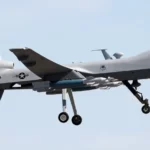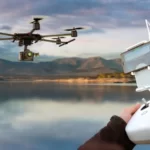How can I be a drone pilot? That is the question.
There are many topics we need to cover in order for you to become an effective drone pilot. So, if you’re interested in learning how to fly a drone, we’ve put up this comprehensive tutorial to give you some pointers and advice.
Table of Contents
What Is a Drone Pilot?
A person who controls an unmanned aerial aircraft is known as a drone pilot (UAV). Drones, particularly multi-rotor “quadcopters,” are becoming more and more capable of completing missions independently as drone technology develops. A drone might be able to remain stationary for a set amount of time (dependent on battery life).
The FAA’s established and enforced airspace regulations must be followed by a drone pilot. The FAA may require prior approval depending on the type of aircraft, the intended location, and the desired height.
What Does a Drone Pilot Do?
A few of the industries where drone pilots can find work include:
- Real estate: When taking pictures and films of a property, real estate agencies occasionally engage drone operators.
- Marketing: Businesses may employ a drone pilot for promotional purposes.
- Drone operators assist surveyors in gathering data for new projects and maps.
- Building & construction: To produce 3D photos of a new project, building companies may collaborate with a drone pilot.
- Entertainment: Drone operators can also operate in the entertainment sector, capturing photographs and films for live sporting events, movies, concerts, etc.
- Insurance: To gather data on insurance claims, some insurance companies employ drone pilots.
- Safety: Drones can collect thermal imaging data that can be useful to firemen and other public safety personnel.
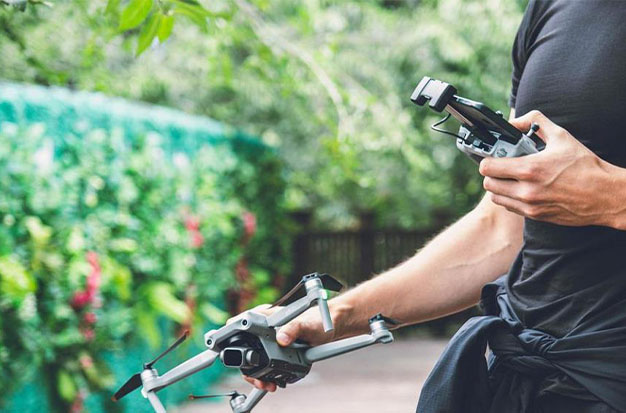
Pros & Cons of Becoming a Drone Pilot
Purchasing a drone, and becoming a drone pilot, both require time and money. Though significantly less of an investment than learning to fly an airplane or a helicopter. When deciding whether to pursue a career as a drone pilot, it’s crucial to weigh the advantages and disadvantages:
Pros
- In many professions, drones are becoming indispensable from inspecting real estate assets to filming breathtaking scenes From agricultural surveying and spraying to rescue operations and wildfire suppression, from pizza delivery to journalism. These are all practical applications for drones that are becoming more and more popular. In many situations, drones are less expensive, easier to control, and can fit into tighter spaces than a helicopter, such as while searching inside a collapsed building for earthquake survivors.
- It is entirely legal. If you have been properly taught and certified by us and the CAA to do so, you are permitted to operate within and occasionally outside of the restrictions for Part 101 or 102 with the New Zealand CAA.
- It will lead to employment. You will be able to work professionally, which is a requirement more and more often these days, once you obtain your UAV pilot license. Without certification, many businesses won’t even consider hiring a drone pilot or a drone-using company. This is for reasons of both safety and liability.
- Credibility. Without a license, drone pilots have a considerably lower chance of finding employment because their abilities and knowledge are unknown. Unauthorized UAV flyers are the one thing that businesses want to avoid at all costs.
- Fun. You will get the most out of your drone and your experience if you are familiar with all of its features and capabilities. Additionally, we instruct you on how to prolong the life of your
Cons
- The usage of drones hasn’t always been bad, thus drone pilots might not be welcome. Homeowners may be antagonistic toward drones and may have security, safety, and privacy concerns. Although it is forbidden, shooting a gun at a drone does occur. In extreme circumstances, homeowners have locked access gates and barred vehicles from entering their properties, effectively holding drone pilots hostage.
- Drones may sustain damage or even cause it: A drone can be destroyed by a wind gust, a signal failure, or a bird attack, which can harm your investment, injure people, or cause property damage. There is a chance that a collision with an airplane will result in terrible harm.
- Drone technology and laws are changing rapidly: It can be challenging to conduct business in rapidly changing industries. A significant investment made today may be obsolete technology in a few years. Beginning in September of 2023, almost all drones flying in the U.S. will be required to broadcast Remote Identification – a unique ID number and their location.
Read More: Drone Pilot Salary
Four Steps to Becoming a Drone Pilot
Compared to getting a license to fly a manned aircraft, becoming a drone pilot is considerably simpler and easier. The procedure is quick to complete:
Step 1: Prepare for Testing
The UAG Unmanned Aircraft General – Small knowledge test does not need drone pilot ground school training, in contrast to other FAA certificates. You must still study for the knowledge test, though. It is advised to enroll in a drone ground school course that covers each of the knowledge domains included on the exam, which are as follows:
- Federal guidelines for small aircraft operations
- Performance and loading of the aircraft
- Scanning the airspace
- Protocols for emergencies
- Making decisions in aviation
- Maintenance and preflight
- Operations after dark
- Set up an FAA Tracking Number (FTN) with IACRA, choose a test location, and register for the FAA knowledge test if you are comfortable with the key ideas and have completed a few practice exams.
Step 2: Take and Pass the FAA Exam
You have two hours to complete the 60 questions on the knowledge test. The aeronautical test has a $175 cost. You have to wait 14 days to repeat the test if you don’t pass (get at least 70% of the questions right).
Step 3: Obtain a Remote Pilot Certificate
After passing the knowledge test, you must complete FAA Form 8710-13 (FAA Airman Certificate and/or Rating Application) to apply for a remote pilot certificate. A TSA security background check is required. Your certificate will be mailed to you as soon as everything has been processed by the FAA. You will then be qualified to operate drones.
Step 4: Purchase a Drone
The final stage is optional. A drone can be purchased! For any work as a UAS pilot, having your own drone is not required. Depending on your contract, a company may need you to supply your own drone if you are compensated as a consultant or contractor. If you are employed as an employee, the business might let you fly one of its own unmanned vehicles. Make careful you register your drone under Part 107 or the Exception for Recreational Flyers if you decide to buy one.
A Few Extra Tips on Actually Flying Your Drone
- Don’t ignore taking flight training. There will be a good deal of information that will genuinely assist you in operating a UAV drone. Understanding weather patterns and how they may impact flight is crucial. Understanding flight restrictions is crucial if you want to avoid obstructing other planes. Our teachers: In the two days you spend training with us, Scotty, a former military helicopter pilot who also flies drones, and Lawrence, an international UAV champion, can teach you a lot.
- Flying needs to become automatic. Before you really apply for a pilot’s license, controlling those controls must become a muscle reflex. If you genuinely want to make a serious living as a drone pilot, extensive training is essential.
- Don’t think that flying without a license is possible. First off, if your employer finds out you don’t have a license, they will usually fire you right away. Also, it can be against the law, so avoid doing it! Third, you put yourself and those around you in danger. Fourth, piloting expertise is a must, especially given the capabilities and level of development of drones today.
Conclusion
The most crucial stage in becoming a drone pilot is actually learning how to fly. As a result, in addition to granting you a UAV pilot’s license, it will also result in a safer flight and improved familiarity with safety procedures.
